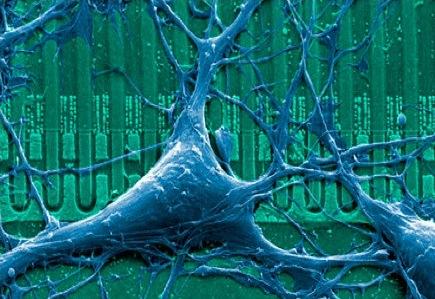
Important implementation examples of biohybrid systems are brain-machine interfaces, where neurons and their molecular machineries are connected to microscopic sensors and actuators by means of electrical or chemical communication, either in vitro or in the living organism. Such neurohybrid systems have the potential for high-impact application to humans, serving as new tools for neuroscience research and as a basis for development of new therapies for neurological disorders and advanced neuroprostheses.
To understand brain functions, to develop new applications for efficient brain-machine interfacing and for therapy of neurological disorders high spatiotemporal sampling of brain neuronal networks is required.
Neurotechnology address basic understanding of biophysical properties of neuron-chip interfacing, technological aspects and constrains in fabricating biohybrid devices, and provide cues on their in-vitro and in-vivo applications in brain research.





